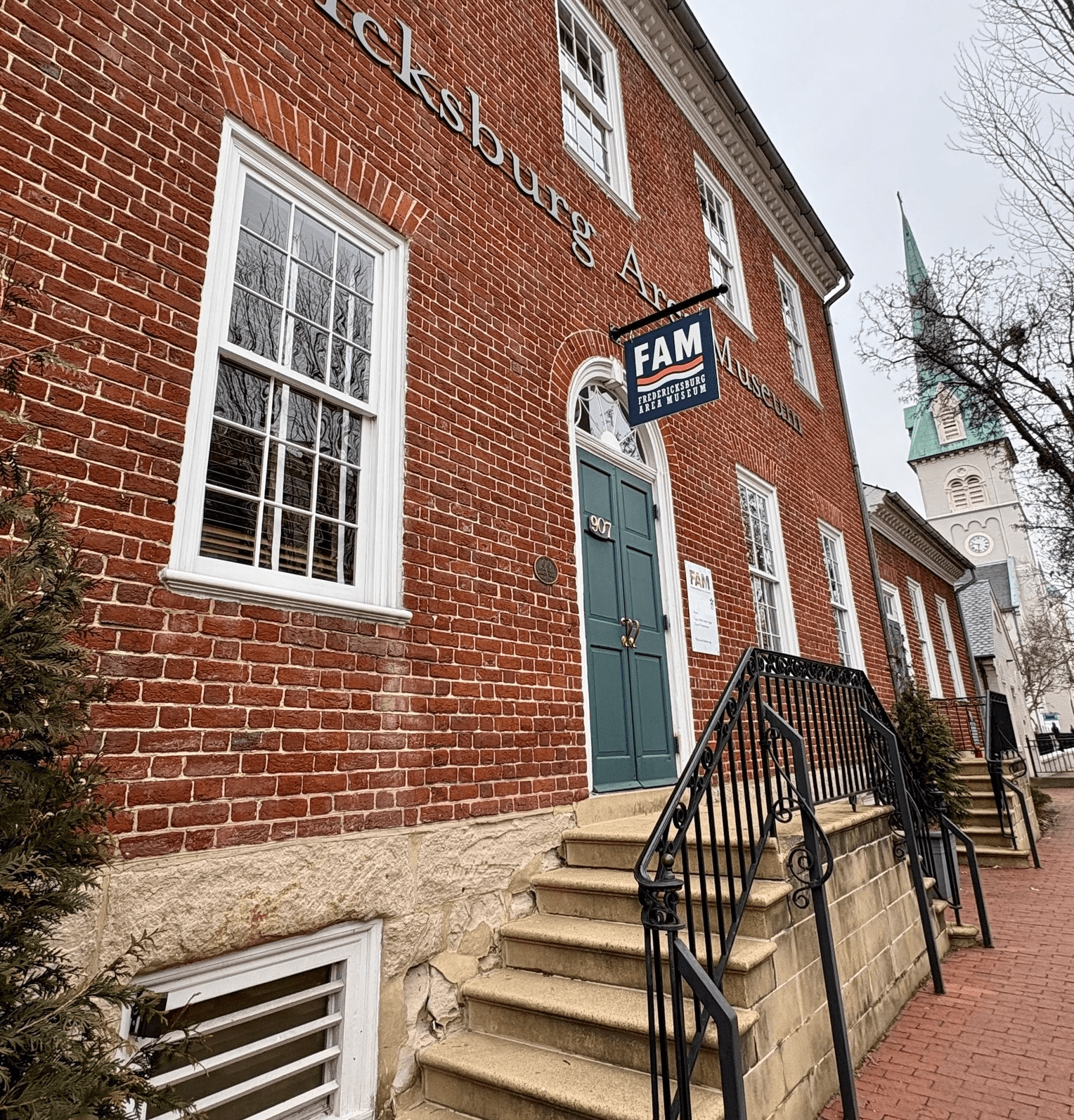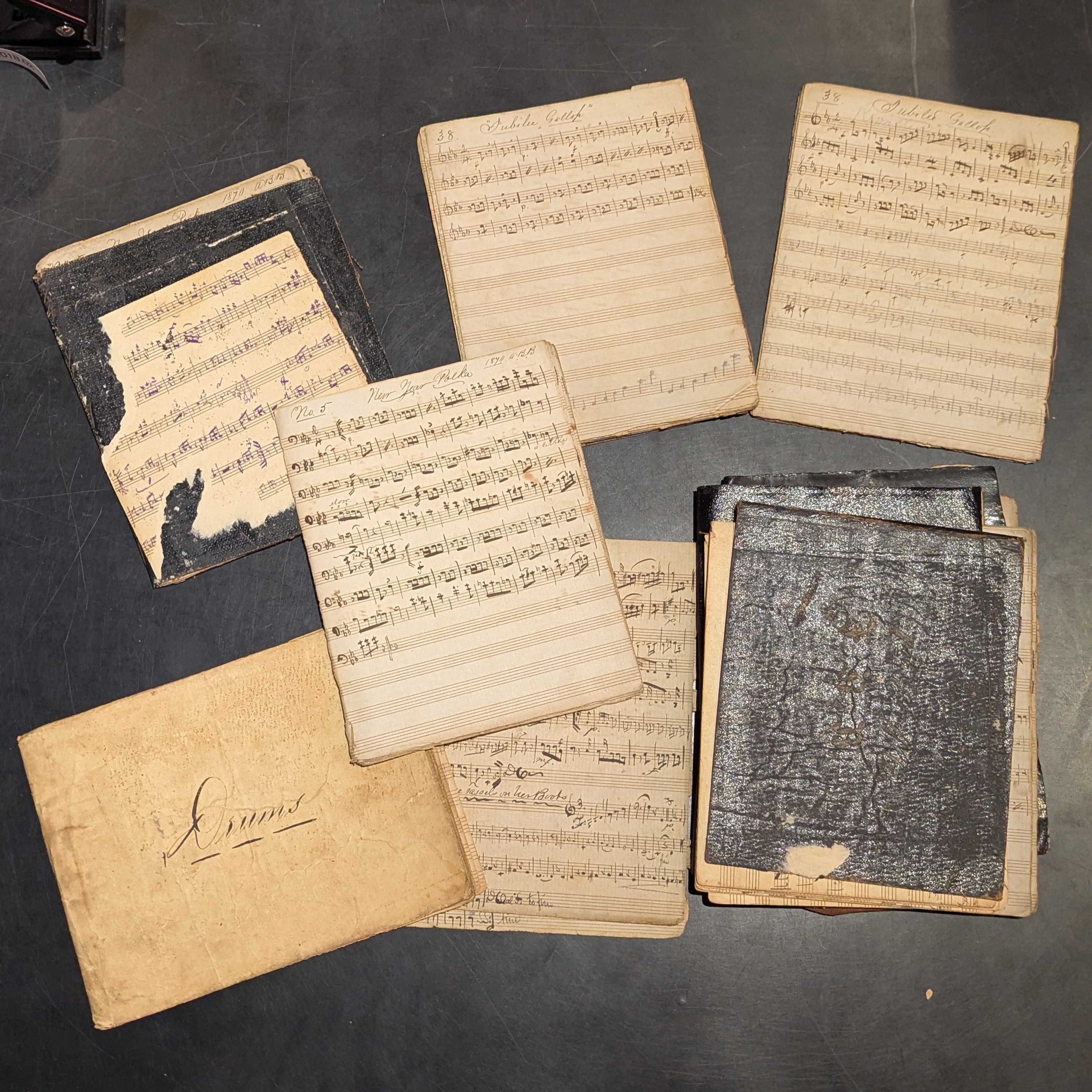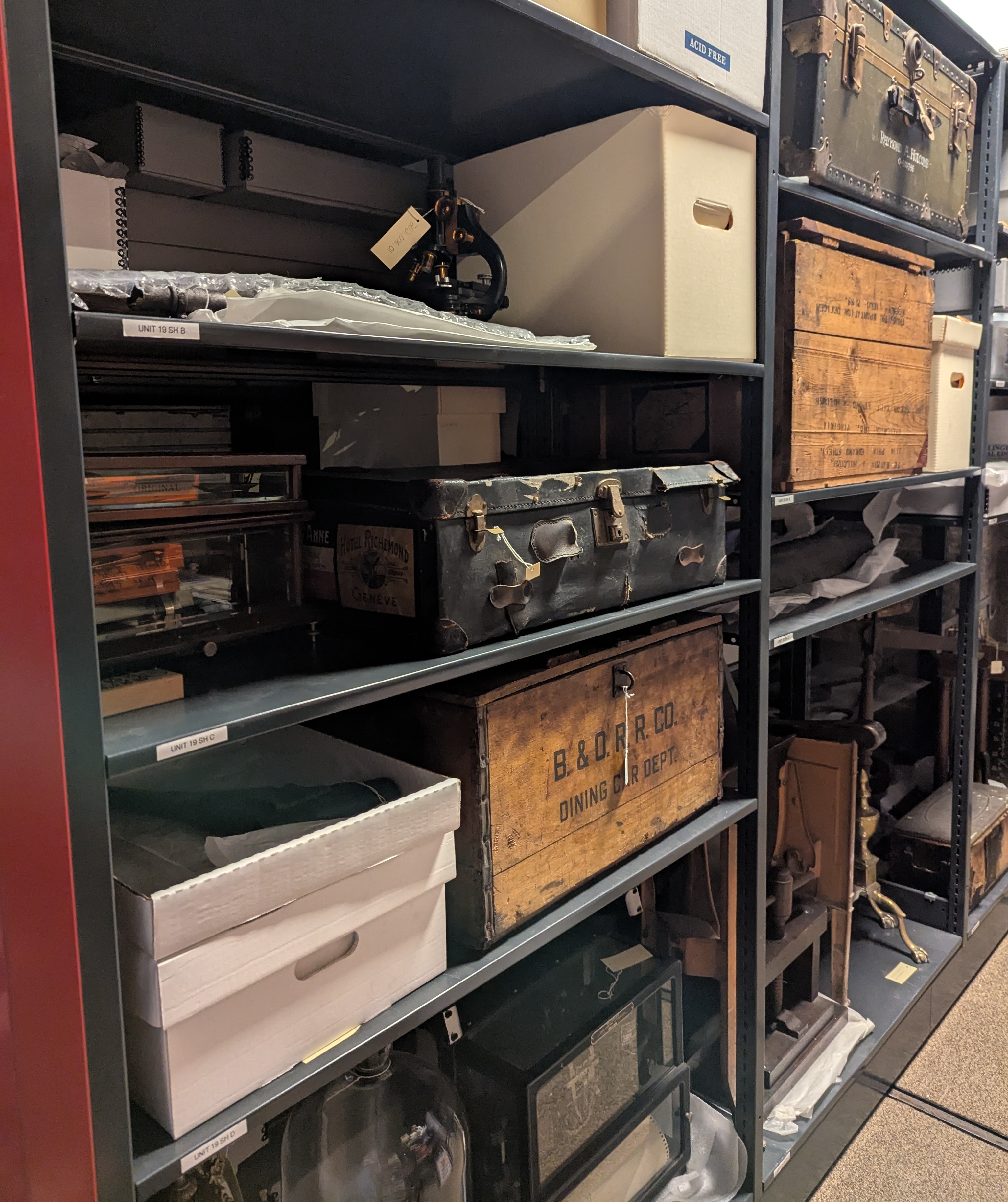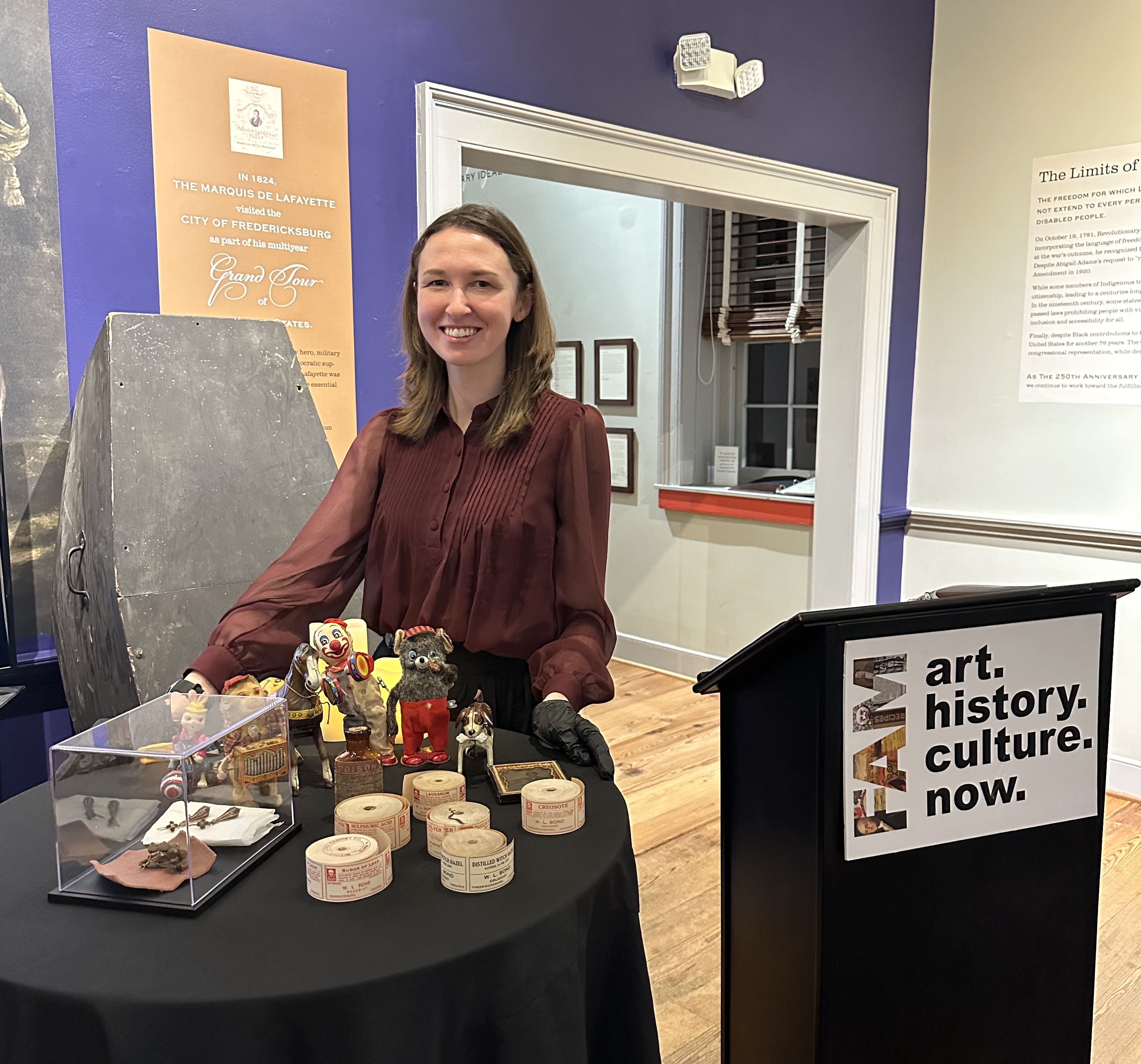The Fredericksburg Area Museum (FAM) preserves and shares the stories of Fredericksburg, Virginia, and its surrounding counties. Using CatalogIt, the Museum has streamlined its collections processes, deepened student and community involvement, and positioned itself for commemorating major milestones, including the upcoming U.S. 250th and Fredericksburg’s 300th anniversary.

Located near the banks of the Rappahannock River in Fredericksburg, Virginia, the Fredericksburg Area Museum has been a cornerstone of regional storytelling since it opened in the late 1980s. It serves not only the city itself but also the surrounding counties of Spotsylvania, Caroline, and Stafford. “There’s a lot of history that stretches all those miles,” said Kylie Thomson, Curator of Collections at FAM.
The Museum’s collection is remarkably diverse, ranging from Indigenous tools and Civil War artifacts to contemporary pieces tied to local history, reflecting the rich and evolving stories of this vibrant community and region. “We always say we're really good at playing Jenga,” Kylie noted. “This collection is everything you can imagine! We have a very unique opportunity at our museum because we [preserve] all of Fredericksburg's history.”

Under Kylie’s care, Fredericksburg’s collection has become a living, evolving resource for both the public and local students. To support that growth, the Museum needed a new collections management system (CMS) that could meet the needs of a dynamic team, offer an intuitive interface, cloud accessibility, and tools that support volunteers.
FAM had long relied on PastPerfect and physical files, but as their work expanded to include more loans, temporary custody items, and growing student involvement, it became clear that the existing system was too rigid and cumbersome. “Basically, anytime I had to use PastPerfect, I had to log onto the network, and there was always some kind of issue,” Kylie shared.
In 2025, the Museum made the switch to CatalogIt. One of Kylie’s top priorities during the transition was streamlining how the Museum tracks loans, temporary custody, and accessions. “I really wanted a system where I could keep loans in their own category—a folder of active loans I could link to exhibits and easily edit,” said Kylie. “Now I can track loans, temporary custody, and accessions clearly, link objects to exhibits, and keep consistent tags across the collection. I don’t have to juggle five or six different spreadsheets anymore. I can even upload PDFs, like deeds of gift or loan paperwork, right into the system.”
CatalogIt also provides Kylie with new tools for community engagement. “I can’t tell you how many times I’ve been talking to a community member or at an event and I get a question about the collection,” she said. “Now I’m able to answer them right then and there. I can pull it up on my phone, which has opened up more conversations, more opportunities for acquisitions, and it adds a personal touch to community interactions.” And those conversations often lead to new information. “Talking about the collection more is actually helping me do the research and fill out the provenance on so many objects,” she added.

The Museum also maintains active partnerships with nearby colleges, welcoming students into meaningful, real-world collections work. Kylie works closely with students from the University of Mary Washington and Germanna Community College, integrating them into hands-on projects each semester. “As a student, I know how cool it is to get [hands-on with the collection],” said Kylie. “It’s really fun to watch them go through boxes and get excited, then come back the next week saying they went and researched it on their own.”
These short-term collaborations provide valuable real-world experience for students while directly supporting the Museum’s ongoing collections work. In just one semester, students scanned and cataloged more than 700 historic photographs, transcribed Civil War documents, and prepared to catalog early Indigenous tools. Using CatalogIt enabled them to develop a hybrid workflow—scanning, measuring, and documenting objects onsite, then completing descriptions and uploading them remotely. “They can use CatalogIt on their own computers [and smartphones]. That flexibility has been fantastic!” Kylie shared.
With guest access, students could log in from their own devices, work at their own pace, and even follow assignment timelines set by their professors. “There are so many opportunities when you trust students to be part of this work,” said Kylie. “They want to learn, and we’re able to be right there alongside them to guide them.”
.jpg)
The Fredericksburg Area Museum is deeply embedded in the community it serves, and that connection shines through in its programming. One standout example is What Remains, a collection-driven initiative and podcast that highlights objects currently off display to spark new conversations and connections. “We don’t want to keep things hidden away. This is your collection,” said Kylie. “We’re just keeping it for you.”
That same spirit is guiding the Museum’s planning for 2026, when it will open a major exhibit in celebration of the 250th anniversary of the United States. “Collections are really driving our focus as we plan the exhibit!” Kylie said. Anchored by objects that reflect Fredericksburg’s role in the Revolutionary War, the team is developing programming that’s both interactive and accessible, with potential for digital exhibits that reach a wider audience.
As the team prepares for this milestone exhibition, CatalogIt is helping to streamline their work behind the scenes. Its tagging feature, in particular, has become a valuable tool for identifying and organizing potential objects for inclusion, allowing Kylie and any co-curators to collaborate and build the exhibition together.

Looking ahead to Fredericksburg’s 300th anniversary in 2028, the Museum is working toward a major milestone: digitizing the entire collection and making it publicly accessible. From uploading hundreds of new object photos to launching the Fredericksburg History Archive, an initiative that invites community members to contribute their own photos and stories, FAM is growing not just as a historical institution, but as a focal point for connection, learning, and shared heritage.
Whether it's students scanning Civil War images, neighbors helping identify mystery objects, or Kylie answering questions with a few taps on her phone, CatalogIt is helping make that work easier and more rewarding. “We’re not just a museum—we’re a hub for the community,” Kylie said. “And CatalogIt has helped us create a system that’s not just organized, but accessible, collaborative, and ready for the future.”